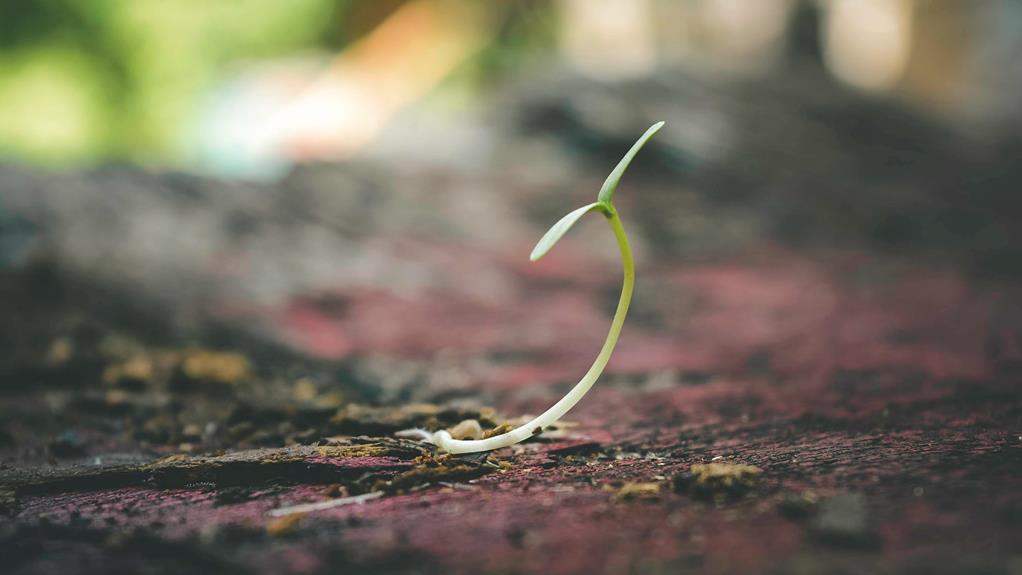
How To Grow Peppermint From Seeds
When it comes to growing peppermint from seeds, the process may seem simple, but the key lies in the details. From the initial sowing to the final harvest, every step plays an essential role in ensuring the success of your peppermint plants. Understanding the nuances of seed depth, soil pH, and proper sunlight exposure can make all the difference in the growth and flavor of your peppermint leaves. So, if you're looking to cultivate a thriving peppermint garden, paying attention to these fundamental aspects is paramount.
Key Takeaways
- Start indoor germination 6 weeks before last frost for strong plants.
- Plant seeds at 1/4 inch depth in rich, well-drained soil.
- Transplant seedlings with true leaves, spacing 12 inches apart.
- Provide 6-8 hours of sunlight daily for optimal growth.
- Maintain consistently moist soil, avoiding waterlogging for healthy development.
Seed Sowing Timeline
To ensure successful growth, begin planting your peppermint seeds indoors or outdoors as per the recommended timeline. Planting mint is an exciting adventure that starts with preparing your mint seeds for their new home.
For a spring transplant, it's best to sow your mint seeds indoors about six weeks before the last frost. This early start indoors will give your peppermint a head start on the growing season, ensuring robust and healthy plants.
If you prefer outdoor planting, wait until spring and make sure to provide minimal cover for the seeds. Regardless of where you choose to sow your mint seeds, be patient as they can take anywhere from 15 to 30 days to germinate.
Soil Preparation
Prepare the soil for growing peppermint by guaranteeing it is rich, well-drained, and within a pH range of 6.5 to 7.0. Mint plants, especially peppermint, thrive in soil that is nutrient-rich and drains well to prevent waterlogging, which can harm the roots. To create a perfect environment for your peppermint seeds, consider amending the soil with compost or organic material. This enhances soil fertility, providing the necessary nutrients for the plants to grow strong and healthy. Peppermint prefers damp or wet soil conditions, so make sure the soil remains consistently moist but not waterlogged.
Here is a handy table to guide you on the key aspects of soil preparation for growing peppermint indoors:
| Aspect | Description | Significance |
|---|---|---|
| Rich Soil | Amend with compost or organic material | Provides essential nutrients |
| Well-Drained | Prevents waterlogging, protecting roots from damage | Ensures healthy root growth |
| pH Range 6.5-7.0 | Maintains ideal pH levels for peppermint growth | Supports plant vitality |
Optimal Seed Depth
Ensuring the correct seed depth of 1/4 inch in the soil is essential for successful germination and healthy seedling growth when planting peppermint seeds. Here are some key points to keep in mind:
-
Balanced Moisture and Light Exposure: Planting at the recommended depth helps maintain the right balance of moisture retention and light exposure necessary for seed germination.
-
Facilitates Germination: The ideal planting depth allows the seeds to access sufficient light, aiding in the germination process.
-
Supports Seedling Development: By planting at the correct depth, you provide the emerging seedlings with a stable environment for healthy growth.
-
Prevents Issues: Planting seeds too deep can hinder germination, while planting them too shallow may lead to drying out. The 1/4 inch depth strikes a balance for successful growth.
Maintaining Soil Moisture
To promote healthy growth in your peppermint plants, ensuring the soil maintains consistent moisture levels is essential for successful germination and development. Peppermint seeds require a consistently moist environment to germinate properly. It's important to prevent the seedlings from drying out, as this can hinder their growth. However, be cautious not to overwater, as overly wet soil can lead to rot and fungal issues in your peppermint plants.
One effective way to maintain soil moisture is by mulching around your peppermint plants. Mulch helps retain moisture levels and prevents rapid evaporation. Remember to regularly check the soil moisture levels to make sure it stays consistently damp but not waterlogged. This practice will help create the ideal growing conditions for your peppermint plants, promoting healthy development.
Germination Process
Maintaining appropriate temperatures is key for the successful germination of peppermint seeds. To guarantee a successful germination process, follow these essential steps:
-
Ideal Temperature: Peppermint seeds germinate best when the temperature is at least 65°F. Consistent warmth is essential for the seeds to sprout and grow.
-
Moisture Retention: Covering the peppermint seeds with plastic wrap helps to retain moisture during germination. This creates a humid environment that fosters seedling development.
-
Timing: Start indoor germination of peppermint seeds about 6 weeks before the last frost date in your area. This timing allows the seedlings to develop and be ready for outdoor transplanting.
-
Germination Period: Typically, peppermint seeds will germinate within 15-30 days. Be patient and make sure the conditions remain ideal for the seeds to sprout successfully.
Transplanting Seedlings
Ready to move your peppermint seedlings to their new home? Transplanting seedlings is an important step in guaranteeing healthy growth. Wait until your seedlings have at least two sets of true leaves before transplanting them. This ensures that they're strong and established enough to thrive in their new environment. When transplanting, make sure to space the peppermint seedlings 12 inches apart. Giving them enough room will allow for ideal growth and development. Choose a location that receives full sun to light shade for your peppermint seedlings. This will provide them with the right amount of sunlight to flourish.
For indoor cultivation, start your peppermint plants from seeds and then transplant the seedlings into larger containers as they grow. After transplanting, consider pinching back the top growth of the seedlings. This will encourage branching and result in bushier growth, making your peppermint plant fuller and more robust. By following these transplanting tips, you'll set your peppermint seedlings up for success in their new home.
Sunlight Requirements
For ideal growth and flavor development of your peppermint plants, ensuring they receive at least 6-8 hours of direct sunlight daily is essential. Here's what you need to know about sunlight requirements for your peppermint:
-
Peppermint Thrives in Partial Sun: Although peppermint can grow in partial shade, placing it in full sun can enhance its essential oil potency.
-
Importance of Sunlight: Sunlight is important for photosynthesis in peppermint plants, which aids in the development of its distinct flavor.
-
Indoor Placement: If growing peppermint indoors, position the plants in a sunny window on the south or east side to ensure excellent sunlight exposure.
-
Healthy Growth: Adequate sunlight is essential for the healthy growth and overall development of your peppermint plants.
Root Space Considerations
When considering root space for your peppermint plants, prioritize providing sufficient room for ideal growth and development. Peppermint plants rely on an adequate root space to thrive. Without enough room for the root system to spread out, the plants may experience stunted growth and reduced productivity.
It's important to make sure that each plant has the space it needs to access essential nutrients and water efficiently. Overcrowding can lead to competition for resources among peppermint plants, impacting their overall health. Proper spacing between the plants is key to preventing issues like root-bound conditions and promoting vigorous growth.
Soil Moisture Management
Considering the importance of providing adequate root space for your peppermint plants, ensuring proper soil moisture management is vital for their ideal growth and health.
Here are some essential tips to help you maintain the right soil moisture levels for your peppermint:
-
Consistent Moisture: Peppermint thrives in consistently moist soil, so aim to keep the soil damp but not waterlogged.
-
Beware of Overwatering: Too much water can lead to root rot in peppermint plants, so avoid overwatering to prevent this issue.
-
Guard Against Underwatering: On the flip side, underwatering can stunt growth and impact the flavor of your peppermint, so make sure the soil doesn't dry out completely.
-
Utilize Mulching: Mulching around your peppermint plants can help retain soil moisture levels, reducing the frequency of watering needed.
Remember to regularly check the soil moisture by feeling the top inch of soil with your fingers and adjust your watering routine based on environmental conditions like temperature and humidity.
Proper soil moisture management is key to nurturing healthy, thriving peppermint plants.
Growth Maintenance
To maintain ideal growth of your peppermint plants, regular pruning is essential to encourage bushy growth and prevent flowering, which can impact the quality of the leaves. Pruning should be done a few weeks before the last frost date to allow the plant to focus its energy on growth rather than seed production. Remember to prune just above a set of leaves to encourage new growth.
Additionally, water your peppermint consistently, ensuring the soil remains moist but not waterlogged. Peppermint thrives in damp conditions. Monitor your plants for pests like spider mites and aphids, as these can damage the leaves and affect plant health. Address any pest issues promptly to keep your peppermint thriving.
Conclusion
Ready to grow your own peppermint from seeds? Remember to start indoors 6 weeks before the last frost or directly outdoors in spring.
Keep the soil moist, provide plenty of sunlight, and transplant seedlings with care. With proper maintenance and attention to detail, you'll soon be enjoying fresh peppermint in your garden.
So, why wait? Start sowing those seeds and watch your peppermint plants thrive!
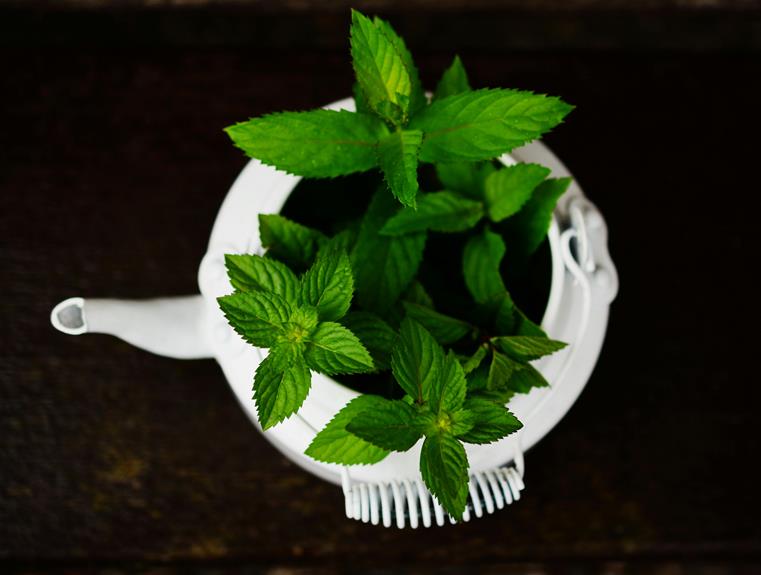
How To Grow Peppermint In Water Without Soil
How To Grow Peppermint In Water Without Soil If you think growing peppermint in water without soil sounds like an impossible feat, think again. With the right techniques and care, you can witness the vibrant green leaves flourishing before your eyes in a whole new way. But before you jump into this exciting venture, there are some essential steps you must take to guarantee success. Let's explore the fascinating world of hydroponic peppermint cultivation and discover the secrets to nurturing this aromatic herb without traditional soil. Key Takeaways Choose a clear glass container for root development. Select healthy peppermint cuttings at least 4-6 inches long. Monitor and maintain pH levels between 5.5-6.5. Provide bright, indirect sunlight and stable temperature. Harvest fresh mint leaves in the morning for optimal flavor. Setting up the Hydroponic System To begin setting up the hydroponic system for growing peppermint in water, choose a clear glass
read more →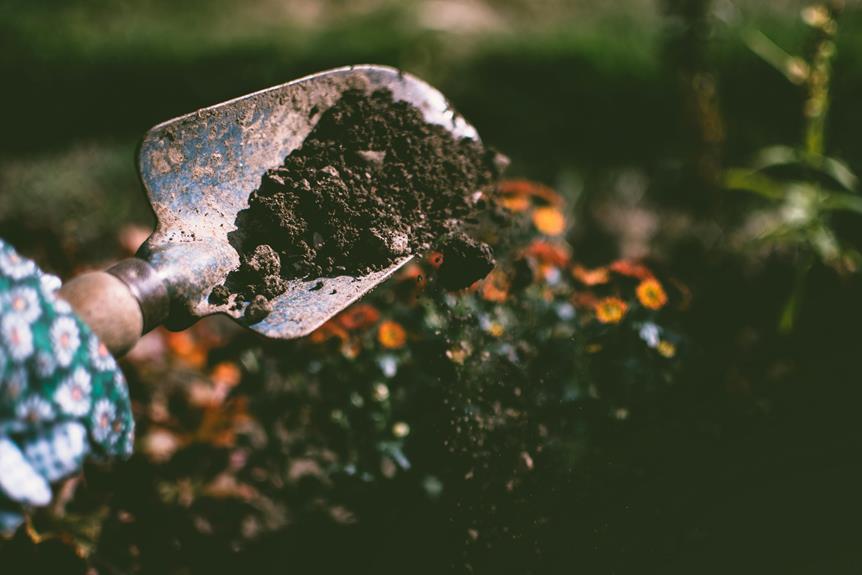
How To Grow Peppermint Outdoors
How To Grow Peppermint Outdoors If you're aiming to cultivate peppermint in your outdoor space, understanding the key factors is essential. From selecting the ideal location to maintaining proper care , each step plays an important role in the success of your peppermint plants. By following specific guidelines tailored to your growing conditions, you can guarantee a thriving peppermint patch that yields aromatic leaves for various uses. But remember, there's more to uncover beyond the basics to truly master the art of growing peppermint outdoors. Key Takeaways Ensure at least 5 hours of direct sunlight daily. Plant in well-draining soil with pH between 6.0-7.5. Space plants 18-24 inches apart for proper growth. Water deeply, avoiding waterlogging, for healthy roots. Prune regularly for bushier growth and higher yields. Sunlight and Soil Requirements For successful growth of peppermint outdoors, make sure that you place your plants in an area that receives at
read more →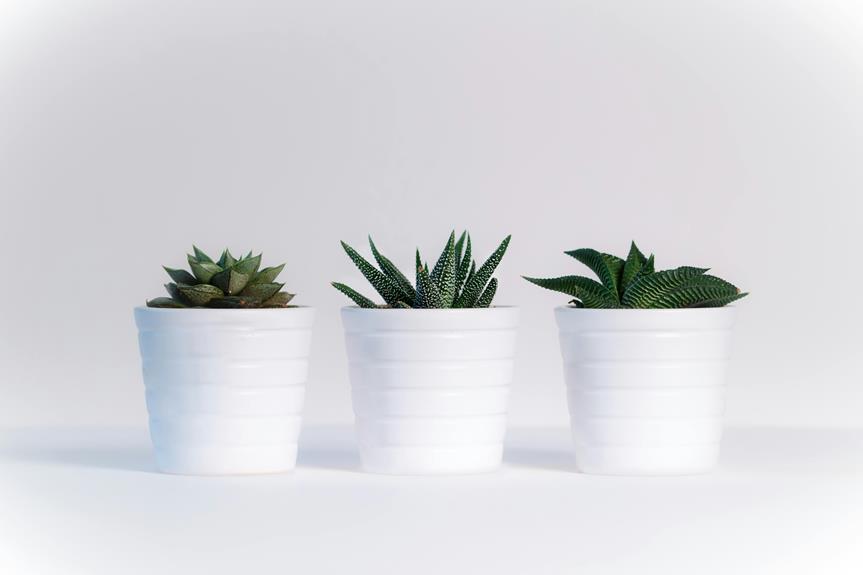
Growing Peppermint In Containers
Growing Peppermint In Containers Did you know that peppermint is one of the easiest herbs to grow in containers, with a success rate of over 90% if done correctly? Starting your own peppermint garden in pots can offer you a fresh supply of this versatile herb at your fingertips, whether for flavoring dishes or for its medicinal properties. But what are the key factors to take into account when initiating this container gardening journey ? Let's explore some essential tips to guarantee your peppermint plants thrive and provide you with a bountiful harvest. Key Takeaways Choose a container with drainage holes and a diameter of at least 12 inches. Use well-draining soil and a nutrient-rich potting mix for optimal growth. Ensure a minimum of 6 hours of sunlight daily for healthy peppermint plants. Water regularly, but avoid overwatering to prevent root rot and diseases. Prune regularly to encourage bushier growth,
read more →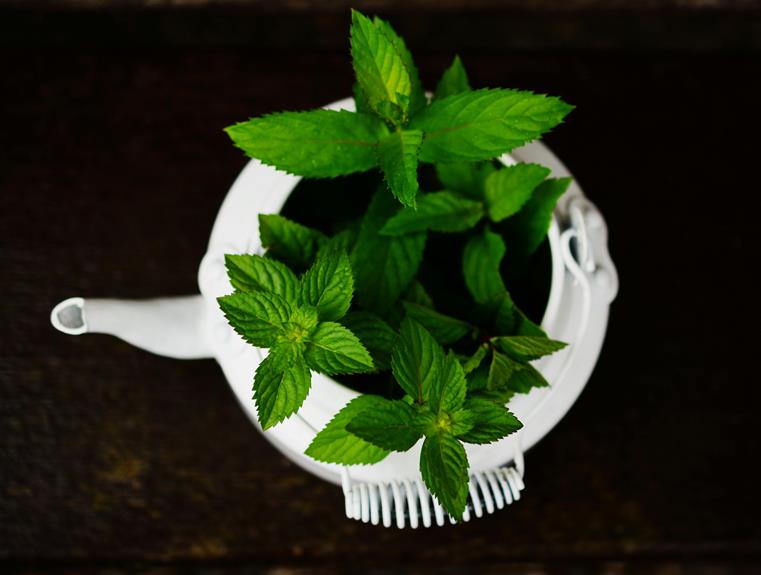
How To Grow Peppermint From Cutting
How To Grow Peppermint From Cutting When it comes to growing peppermint from cuttings , think of it as planting the seeds of a new beginning. Starting with a healthy stem is vital, but that's just the beginning. The process involves precise steps and attentive care to guarantee successful growth and a bountiful harvest. So, are you ready to discover the secrets to cultivating your very own peppermint garden from cuttings? Key Takeaways Select a healthy 4-6 inch stem with multiple nodes. Cut at a 45-degree angle just below a leaf node. Plant in moist, well-draining potting soil. Provide indirect sunlight and maintain humidity. Monitor growth for new leaves and root development. Selecting Healthy Peppermint Stem When selecting a healthy peppermint stem for propagation, make sure it's free from disease or damage and is approximately 4-6 inches long. Look for a vibrant plant stem with fresh leaves , indicating its
read more →How Do You Grow Peppermint Hydroponically
How Do You Grow Peppermint Hydroponically If you want to grow peppermint hydroponically , you need to understand the essential supplies required and how to maintain ideal growing conditions for a successful harvest. But how exactly do you set up a hydroponic system for peppermint? Let's explore the step-by-step process of creating an ideal environment for your peppermint plants to thrive and yield flavorful leaves that can elevate your culinary creations to a whole new level. Key Takeaways Choose a hydroponic system like Deep Water Culture for optimal growth. Maintain pH levels between 5.5-6.0 and EC levels between 2.0-2.4. Provide 14-16 hours of grow lights or sunlight daily. Snip off top leaves for bushier growth and harvest mature leaves. Keep temperatures around 65-70°F and ensure constant moisture for root development. Benefits of Growing Peppermint Hydroponically Growing peppermint hydroponically offers numerous benefits over traditional soil cultivation methods. Mint is a fast-growing
read more →
Growing Peppermint From Seed Indoors
How to Grow Peppermint From Seed Indoors If you've ever imagined filling your home with the invigorating scent of freshly grown peppermint , starting on the journey of nurturing peppermint seeds indoors might be just the project for you. The process of growing peppermint from seed requires patience, attention to detail, and a few key considerations that can make all the difference in the success of your indoor garden . Whether you're a seasoned gardener or new to the world of herb cultivation , the rewards of cultivating your peppermint indoors await, offering a delightful and aromatic addition to your living space. Key Takeaways Start peppermint seeds indoors 8-10 weeks before last frost with moist soil at 70°F. Provide consistent temperature, ample sunlight or grow lights, and controlled humidity levels. Maintain steady moisture, air circulation, and temperature between 60-70°F for healthy growth. Transfer seedlings to 12-inch pots with drainage holes
read more →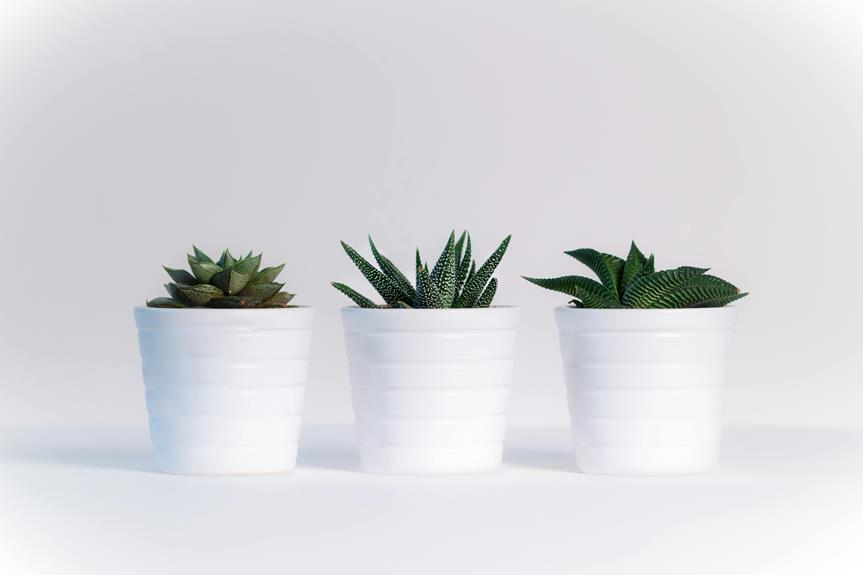
How To Grow Peppermint Indoors
How To Grow Peppermint Indoors in Your Herb Garden Did you know that peppermint is one of the easiest herbs to grow indoors , requiring minimal care once established? By following a few simple guidelines, you can enjoy a fresh supply of peppermint leaves right at your fingertips. Whether you're a seasoned gardener or just starting out, cultivating peppermint indoors can be a rewarding experience that enhances your culinary creations and provides a natural remedy for various ailments. So, let's explore the essential steps to help you successfully nurture this aromatic herb in your home environment. Key Takeaways Choose a sunny location with good air circulation and drainage. Use well-draining soil with pH 6.5-7.0 and water when the top inch is dry. Consider using grow lights for sufficient light intensity. Fertilize every three weeks with organic liquid fertilizer, avoiding over-fertilization. Prune before blooming, remove blooms, and prune regularly for bushier
read more →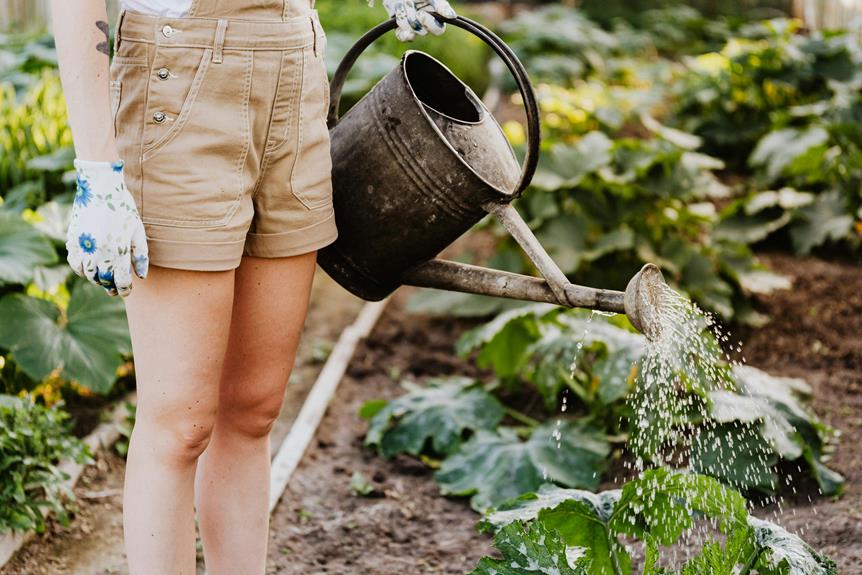
Planting and Caring for Peppermint
How to Plant and Care for Peppermint in Your Garden If you're looking to cultivate a vibrant peppermint plant in your garden, the journey begins with understanding the nuances of planting and caring for this aromatic herb. From selecting the right variety to mastering watering techniques and the art of pruning, each step plays an important role in ensuring a flourishing peppermint patch . So, as you start on this green-fingered adventure, be prepared to discover the secrets that will nurture your peppermint plant into a thriving and fragrant oasis in your backyard. Key Takeaways Plant peppermint in spring after last frost for optimal growth. Ensure warmer temperatures, sunlight, and slightly moist, nutrient-rich soil. Mulch with 2-3 inches of organic material in autumn for winter protection. Regularly harvest for fresh leaves and prune for healthy growth. Monitor soil moisture, provide adequate sunlight, and divide plants in autumn. Variety Selection When
read more →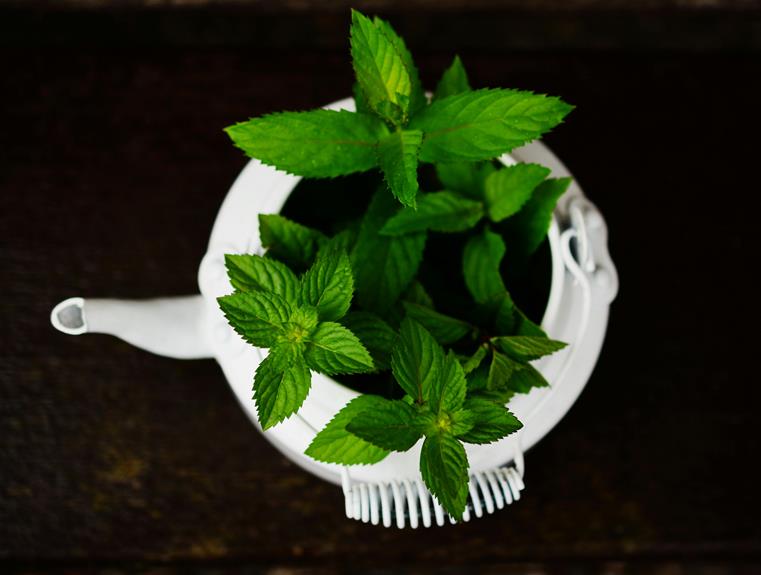
How to Grow Peppermint In Pot
Growing Peppermint In Pot If you're looking to add a touch of freshness to your culinary endeavors or simply enjoy the soothing aroma of peppermint, growing it in a pot can be a convenient option. The process of nurturing this herb requires attention to detail and a few key considerations to guarantee its vigorous growth. From selecting the right container to mastering watering techniques, each step plays an essential role in fostering a thriving peppermint plant. So, are you ready to begin on a journey toward cultivating your own little peppermint oasis? Key Takeaways Choose a container with a 12-inch diameter for peppermint. Use well-draining soil mix with compost and perlite. Provide at least 6 hours of sunlight daily. Water when the top inch of soil is dry. Harvest leaves in the morning and store properly. Selecting the Right Container When choosing a container for growing peppermint, opt for one
read more →